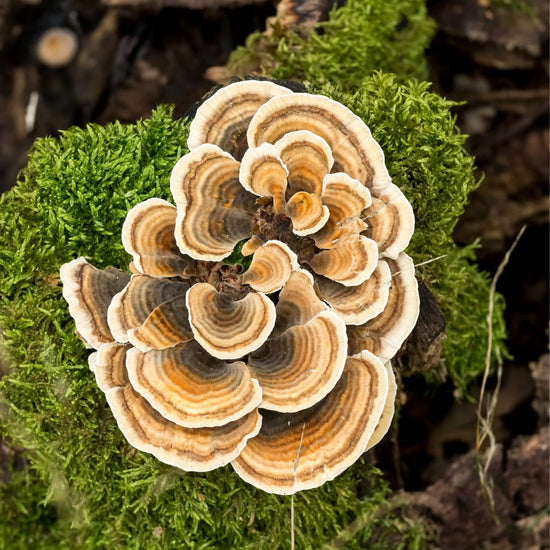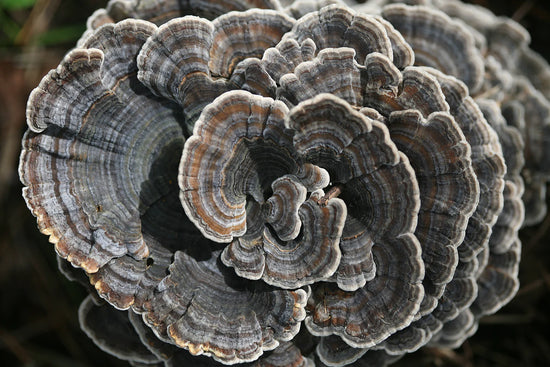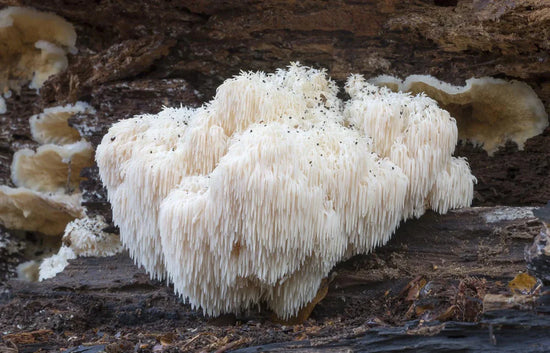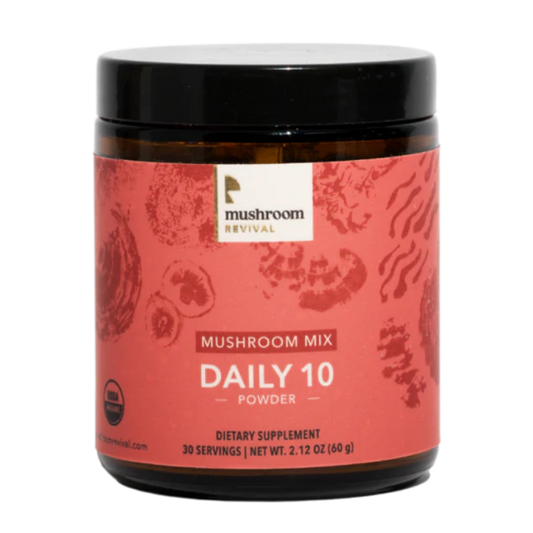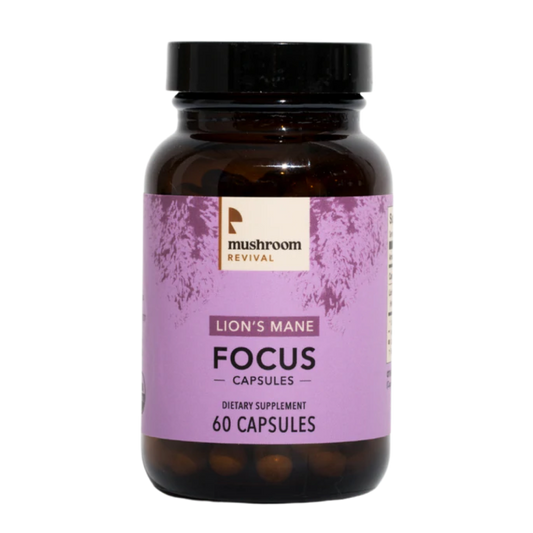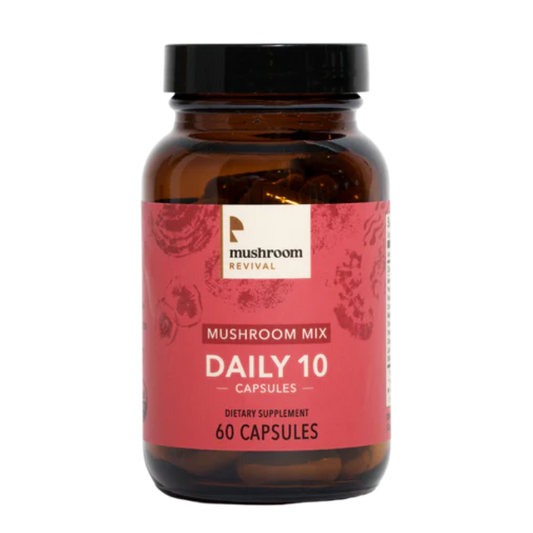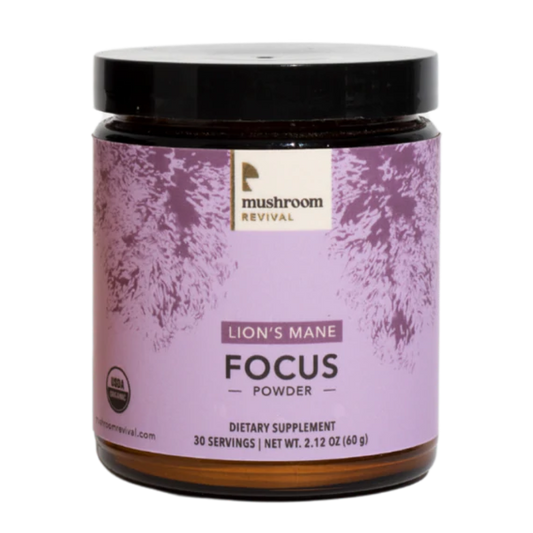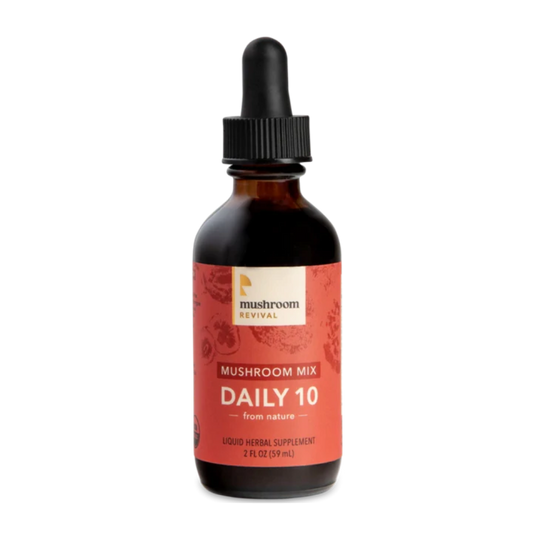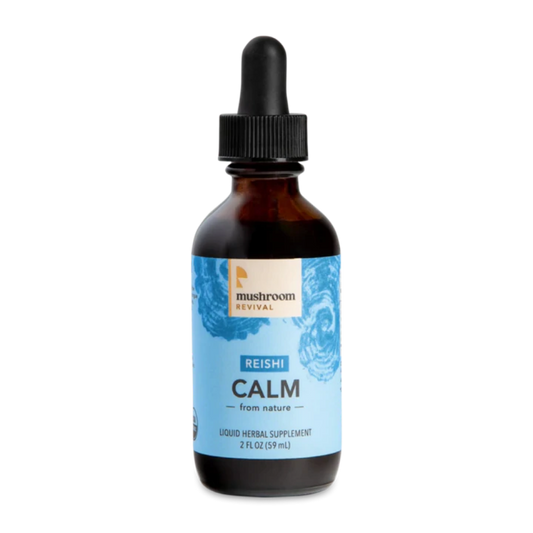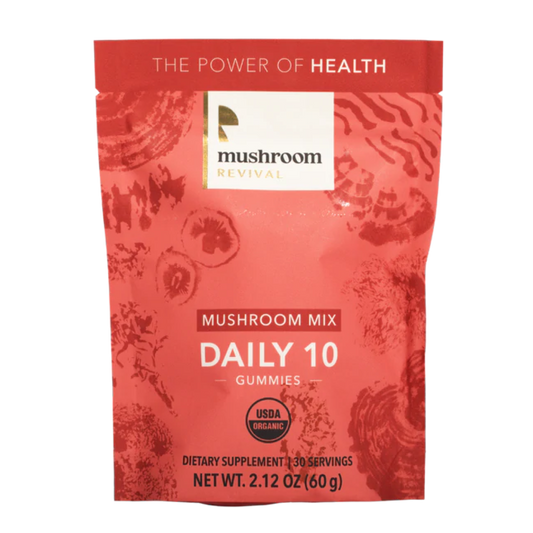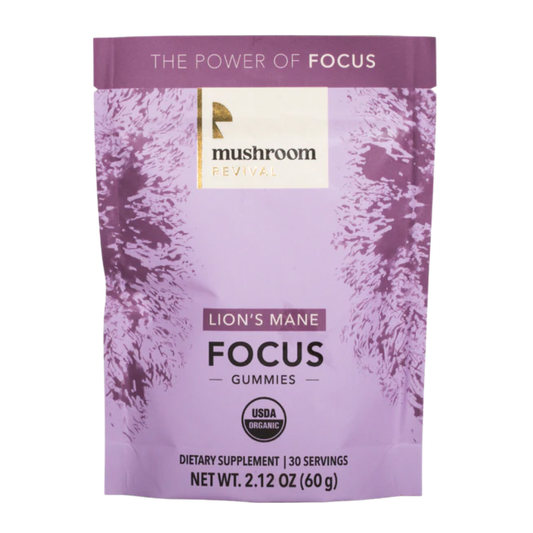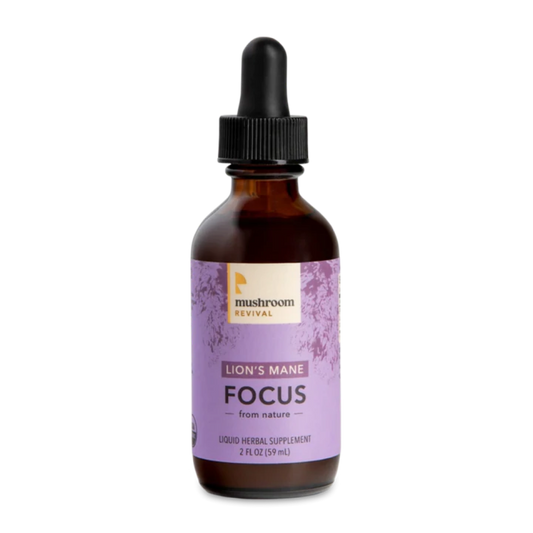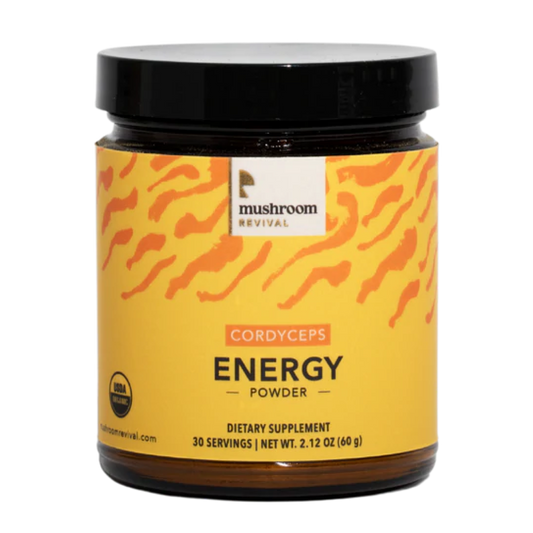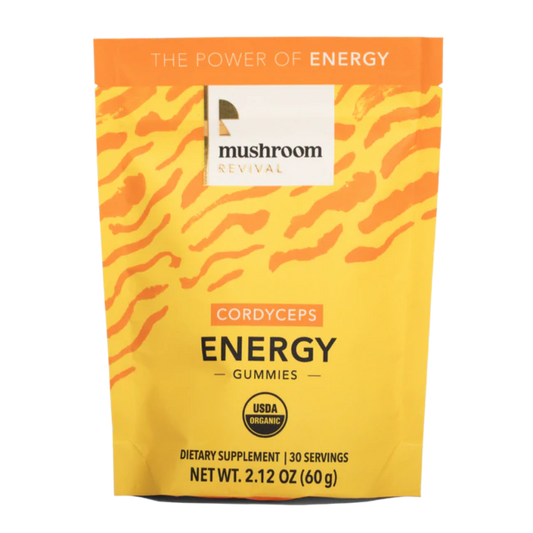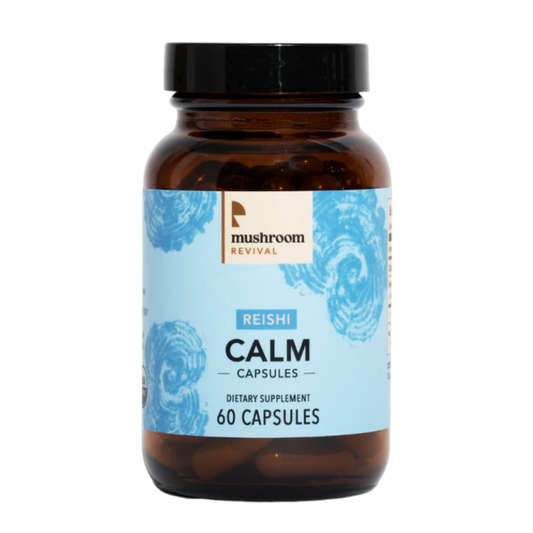TRANSCRIPT
Unknown Speaker 0:00
Alex,
Speaker 1 0:12
welcome, welcome. You are listening to the mushroom revival podcast. I'm your host, Alex Dorr, and we are absolutely obsessed with the wonderful, wacky world of mushrooms and fungi. We bring on guests and experts from all around the globe to geek out with us and go down this mysterious rabbit hole to try to figure out what the heck is going on with these fungal friends of ours. And today, we're going to talk about Mexican gastronomy with some friends a daddy and is it Joaquin? Joaquin, correct, yeah. So how y'all doing? Where are you tuning in from? Mexico City. We
Speaker 2 0:51
are in Mexico City right now. That's where we live. Thanks for inviting us. It's a pleasure to be with you? Yeah? I, yeah.
Speaker 1 1:04
I would love to hear more about what you guys are doing in in Mexico City, and what dishes that that people have not heard about if they don't live in Mexico or are not too into mushroom cuisine
Speaker 3 1:22
shows to another restaurants. One of the restaurants is working restaurant. I also have, like this part of trying to understand mycology between, you know, like people like that. I have no mycologist, the chefs and people who like mushrooms, and to, you know, like the scientists that are working with mushrooms, so we're doing that. And I think when you arrive to Mexico, like Mexico City talking about here, the first thing that you're gonna find, it's a piece of video with mushrooms that's gonna be like white bottoms with the basalt that it's flat from here, but also you can find with black cochine. And it's like, super interesting, because very Cornell for you. Like, do you want a quesadilla of orange drums, or do you want the quesadilla of with glad cochine? So there's, like, two different things, but I think maybe that's the first approach that you will talk in Mexico City, like in a street, uh, street food or something like that. If you go to a restaurant, you're gonna find, like,
Speaker 2 2:32
different things. Yeah, now more and more, luckily, but yeah, so I am Bucha. I'm a cook. I have a little wine bar in Mexico City called Lubar. We focus on natural wine, and as part of that philosophy, we try to use as much as ingredients that makes sense for us in terms of sustainability and social sense, of course, to paying what is to like, how we called it, the conscious economy and social so that's what we do. We don't, we don't really say it, but that's what we work and we just have one two people have a good time and see what we do from a fun point of view, and also to change this image of the wine to be like a very intellectual or fungi thing into a more common and approachable. So that's what we do in our bar. It's a small bar, and yeah, every season, we work with more and more mushrooms from the rain season here, it's in the summer, and also with cultivated mushrooms that already now provide us so that's what we basically work on a daily basis.
Speaker 1 4:08
So I love to talk more about whitlaco. She because I feel like a lot of people outside of Mexico don't know what it is, or if they do know what it is. I mean, it doesn't look that appetizing, but it's so tasty. It's one of my favorites of all time. And even my my dad grew up on a farm in Iowa, and they grew some corn, and he said, when he was growing up, they when they would see it, they would burn it, because they would think it was like this bad thing, and like this blight that would take over. And now he's kicking himself because he loves it. And he's like, Oh my god, I should, we should have saved it. We should have, you know, and he's like, I can't believe we burned it, like I'm such an idiot. And I feel like that's true for a lot of farmers, or a lot of people who see a picture of it, and for people listen. Who have no idea what I'm talking about. Can you kind of explain what corn smut is, or what la coach is?
Speaker 3 5:06
If I have, like this time capsule, I would love to see this moment that people enter into the into the corn, the corn plantation build, yeah, and see this black corn like, you know, because sia with lacotte, it's really interesting because it's like a white corn or yellow corn, or we have like 64 different species of corn in Mexico. And every single time that I see a wild species of with of corn in brain season with lagoche, you know, like the Cultivate one, it's like, super perfect, and fits like in every single part of the of the corn. And when you see a wild one, it's like to see, I don't know, an alien. So, you know, like entering in that time of the of the humanity, and feel like, okay, let's taste it. Let's put it into our quesadilla and try it. I think it's really interesting because, as you said, like, when you have it on your on your on your land, you're gonna burn it, and you're gonna say, like, Okay, I have this bad thing in my plants, and I don't want it. And someone in Mexico just said, like, let's try it. And it's really interesting, because not in all Mexico people eat sweet so, yeah, I think, well, I don't know how to describe it, because,
Speaker 2 6:39
in a way of what for me, it's interesting, because, you know, corn was not corn since the beginning. So it's a kind of a new mushroom that, you know, corn in Mexico, you cannot think corn without a human touch and a social work. Also, like, it's three things, no, it's nature, the corn. I mean, the social work of of like, every society has every, yeah, social nook, they have different type of corn. Once I did an experiment, and I was eating in Oaxaca, and they gave me a tortilla with three different corns, and they tasted super different. And one was the steam region, one on this one, one side of the mountain where the sun hit differently, and then two from the other side of the mountain. And just the difference from the other two was the family who was working the corn, and even that changed the taste of the corn. So I cannot imagine, like, how cannot, can affect, like a mushroom as well, you know? So it's like, can, it's very complex at the end. And
Speaker 3 7:54
also the taste when you compare, like a white one with a cultivate one, you know, like, yeah. I mean, it's like, oh, nature, because tastes like, super different. The consistency is like, better, the older, everything change. And it's like, starting over over again. Because once I do understood how, with, you know, like, wrong with lacocha works, there's the wild ones. And it's like, Hey, I'm here. I'm super different. And now you have to learn about me, and you have to learn in a beach as a provider, how much I can live in your fridge. It's, yeah, mushrooms.
Speaker 1 8:36
It. It's really wild. I don't know if you've seen pictures of of really old corn, like wild native corn. I know what the correct term would be, but it has like eight kernels, and then the corn that we know today is has been cultivated and kind of genetically modified and bred to look like the corn we know today, like most plants, right? Yeah, and, I mean, it's pretty wild to see. It's almost like we improved corn to a point, and we got it to a really good place, and then now mostly the US kind of fucked it up with just breeding this just ridiculous, tasteless corn filled with, you know, pesticides and genetic modification and stuff like that. I just read an article. Is it true that Mexico is banning corn from the US? Have you heard about that
Speaker 2 9:32
we were and now recently, not anymore? Yeah. So yeah,
Speaker 3 9:38
Mexico City, we we actually, but just Mexico City, not only, well,
Speaker 1 9:44
that's pretty good. Yeah, my, my really good friend, studied potato diversity in Peru. And, you know, just like you were saying with the three different corn species, it was the same with potatoes, and she was in. Interviewing different people who said, Oh, if you have a stomach ache, we use this potato. If you give birth, you give this child this potato. If you know your child is colicky, you give this different potato. If you are, you know, getting married, you get this potato and he, you know, we just have, like, a couple different varieties that we know, but it's kind of the same thing, that we're moving far further and further away from our food. And the same could be said about mushrooms. Like most people only know button mushrooms or portobellos, but there's so many beautiful varieties that people use all around the world, and they taste incredible, like with lacocene, yeah,
Speaker 3 10:43
yeah. And also, I think that it's super interesting, because when you speak about edible mushrooms, in Mexico, we have like 450 species around like 500 and every single time that we enter again into rainy season, that it's also, like, super interesting, because when you think about summer, you think about the beach, and, you know, like sun and bikinis, and summer in Mexico City, it's horrible, because we have, like, rain all day, and in the morning we have the sun, And then we have rain, and then we have cold. And it's like, super interesting to understand, like, how we spend the summer holidays here, and then, you know, like, it's normally vacation for people, but when you work with mushrooms, it's a lot of work. And on that time and people of all over the world in this part of Mexico City, like Roma, Condesa Juarez, all these neighborhoods, we have a lot of tourists every single day. So when raining season start again, not now. It's like people from Mexico and people from other countries, just discovering, like, the lots of species that we have of mucros, every single time that we enter, we ask to the people, like, how many mushrooms do you try this year? Like, start counting, because also the species start to change like, you know, like in all the season that well in other years, rainy season start in Mexico in May and ends in October. Right now we have rainy season maybe at the middle of end of July to the beginning of November. And it's like, super interesting as well, because now a lot of chefs as fungi are trying, like, once again, quit Lago trip is something that you have available. And when I start, like, five years ago, working with restaurants, well, actually, for years, at the beginning, it was like, Okay, do you want mushrooms? And it was like, Yeah, white bottoms. And I was like, okay, yeah, do you want another kind of mushrooms? Oh, yeah, I'm gonna have gramini. And it was like, same mushroom, but okay. And now we're seeing a difference, like, people are asking for different kind of oysters. People are asking for fresh it takes that. It's like, super interesting, because when they try like fresh shiitake, it's like, okay, why taste like? Super different than the one that I bought at the Chinese store. It's like, okay, maybe this one, you know, like, hasn't traveled like, all over the world just to be in your dish. Then we have now, for example, people are asking for lion's mane. Or now we're seeing oysters, not only in a quesadilla. We are seeing like oysters in a taco as pastor way or oysters in a ceviche. And then when we enter into the rainy season, oh well, and with a coach, and then we're entering into rainy season. And now it's not people asking for chanterelles or for cities or memorials. Now it's like, okay, squat Jean every single time. What do you have this week? And it's like, okay, I have this one that it's like, yellow inside, and it's gonna turn blue, and it's like, uh orange on the top. And he's like, I'm gonna die. But so I think that it's super interesting how the market and how the the people are asking for different kind of mushrooms. And people are like looking for like mushrooms that we have in our culture, and maybe with La coaches, one of the two. Better beginnings, you know, because we have it like all the time, and we have it just like going to the corner and going for a quesadilla because I was reading one time a paper now, well, yeah, no, not before about how many mirrors a Mexican is from a taqueria or a puesto de Quesada, yes. And we are, like, three, 300 meters. It's, like, super easy. I'm
Speaker 1 15:30
so I'm I'm really curious, because, you know, Mexico City is such a food hub, and you brought up Oaxaca, also an amazing food hub. But I'm curious when you're talking about with the coach a, you said, not all regions of Mexico actually eat it. And I'm curious about both with Coach A, and then just mushrooms in general. From my perspective, it seems like Mexico is very much mushroom rich, both in wild mushrooms, and, you know, history and love for mushrooms. But I'm curious, what are there any regions that are not so mushroom loving, or, particularly, you know, don't eat lacoche Or, um, yeah, that do any regions come to mind that, yeah, are not as mushroom loving,
Speaker 3 16:21
no, but we have these phenomenons of mycophilia, mycophobia in Mexico as well, even though we're a mycophilic country. In the north of Mexico, people don't eat a lot of mushrooms, actually, like they prefer meat. In the center of Mexico, we have a lot of mycophiliac thing. Things, not only with edible, also with medicinal. But you know, like it's a different kind of medicinal than, like, for example, Chinese medicinal mushrooms in the southern maybe Chiapas in that regions, but if you go to Yucatan, they don't eat like a lot of mushrooms. And also, it's interesting how the phenomenon works, because that last year, we found 30 100 Myco tourism events all over the country, but we have like events that are running from communities. We have events that are running from mycologists. So for example, in Jalisco we have the laboratory of Dr Laura Guzman, and it's mycology running, but by mycologist, but it's not that people are asking for the mushrooms or they're mycophilic. I don't know how the restaurant is seen in Jalisco like in Guadalajara. Like, what mushrooms? I think also it's growing. I have seen, I mean, I have seen more and more dishes like, now it's easy, no, because we have all the social media
Speaker 2 18:06
that's a good tool sometimes, so you can see almost immediately what people are doing. So, yeah, I think it's a general movement that we're using more and more. And I think, like, maybe it's related, like the places where, in Mexico, when we eat more mushrooms, I think they are, we are a little bit more rooted with our Asian people. Like in the north of Mexico, it's hard now to see a big community of of Asian people of Mexico, like, mainly, they are, like new colonizers, probably, I mean, it's part of Mexico also now, but thank you all. I think if you do like a social study, that could be a reason also, and in Yucatan, because we learn our friend, the cycles are very, very quick, because almost rain forest. So think it's very hard to even if you there is mushrooms that you can eat, it's very hard to get them.
Speaker 3 19:15
Yeah, we also have, like, in mycology, that joke that if you're in the center of Mexico, you walk 100 meters and you find like a big Amanita or a beef boletus, and a community working with them. But if you're on the north of Mexico, you have to walk and walk and walk and walk, and you're gonna find like a really tiny mushroom and maybe a community, but they're gonna be like, Yeah, I'm a sham. Okay, hi. So, yeah, a lot of the communities are like, super different, even if you work, for example, in a volcano, in one side of the volcano, they're gonna eat one kind of species. To move from and on the other side of the volcano, Rico Naida, or a lot more, we had last year the experience with the onerous pica COVID. It's an indigenous group of Mexico, of the center of Mexico. It's the first female corporate cooperative, well, the first female society run by an indigenous group of Muslim figures. They make like Myco tourism and everything. And we went to their forest and the diversity on the dishes were like, wow, and it's super interesting because, for example, with them, they eat el Bellas or hero Mitra or Morris without boiling, because they, like, on a high risk, like, they don't have, like, it racines. And then we're like, what? So any, like, raw morals and raw ALS and they were like, Yeah, you want to try and Hagen. Are like, yeah. Like, I have to call my mom first, and then I try. So I think that yeah, super interesting, also to see, like between communities, and also maybe market change even in the city, like people in the restaurants. Of these are maybe, like, one kind of France or, yeah, I ended up, yeah.
Speaker 2 21:31
Well, I think Mexico City has, like, you know, we had a lot of influences from outside, also no especially Spain. And we were talking once with it ready, like she told me, like, depends where your family in Spain came from, it's like, you're gonna like, more or less the mushrooms, you know, if you are like from a past country heritage, probably you're always look for this kind of food. If you come from a Galician part of Spain, probably you don't, because it's more close to the Celtic world. And they always been a little bit mysticized by the fungi and or Catalonian also, they love mushrooms. So we have a big diversity of immigrants and different times. Also we had at the beginning, and then we had with the spine revolution with Franco. So we always have different moments. And I think the city and and it's talking about the Mexico City, always have been shaped by this migrant flu process, and in my family, I remember they always buy these little mushrooms in the market since I was little. So, yeah,
Speaker 1 22:57
I'm so curious about that, because in the United States, we do not have a very strong connection to our indigenous population at all. I mean, it's terrible. It seems like Mexico has a lot better appreciation and I mean, compared to the US, but the US is a very low bar. So it's not saying much. I know there's a very troubled history, but I'm curious like, what would you say is the percentage? Or, you know, Spain is a very mushroom loving country, but I am curious like, how many dishes come from indigenous Mexico, or, you know, how much was post Hispanic colonization influenced, like from Spain on different mushroom dishes or mushroom loving culture? If that question made sense, yeah,
Speaker 3 24:02
I think it's like super interesting just to have like this question. Because every single time that we speak about ethno mycology in Mexico, and we compare to Asia, like with Japan or with China, we have something super important in Mexico that we were conquered by Spanish. So we don't have, like, any documents that prove that we have those things, or a lot of things, and particularly with mushrooms, the first, well, actually, the first paleographic proof of the consuming mushrooms. It's in Mexico on the correct Florentino Codex. But in that Codex, they show a demon behind the the guy that it's, uh, looking for the mushrooms, because it was like, you cannot have, like another god, and you cannot be. Like picking something that's gonna give you powers or something so that's from the evil. And actually, we don't have like, a lot of documents, or we, well, not a lot. We don't have like documents that says, like, we eat these mushrooms, or we have, like, as we have with other ingredients, like plants or animals, or, you know, like, for example, things that we cultivate, and chinampas and everything, or even in insects, you know, like with mushrooms, it was like, we're not gonna talk about it. And every single thing that we know about mushrooms Mexico, it's because someone went with the communities, and it was like, Hey, how are you? I'm making my thesis. Can you tell me more about this mushroom? And can you and actually, all our knowledge about ethno mycology, it's been growing like that, like going to a community, speaking with someone and then putting on a paper or on a thesis or working with the community. So yeah, I think that maybe we don't have, like, the real percentage of the dishes, but a lot of our cuisine, quick mushrooms in the center of Mexico, came from the indigenous people. And for example, we have this traditional mushroom soup here in Mexico City. We're pretty close from forest, like four minutes to two hours. So we have this popular place that we call la marqueza. And you can go to make, like motor crust, or to, you know, like eat something or drink or whatever. And they have this mushroom soup that it's mushrooms, Chile and passata, maybe, and chicken,
Speaker 2 27:00
see, but no, at the beginning was in chicken broth. No, I think it's very simple. It's just like a little little console man with a used to be only with wild mushrooms, yeah, at the beginning. And then you usually use what's around you. And unlike the traditional seasoning, it's chili and some herbs. No, then in this region, we use this episode, which is a type of cannoboat, and that's what we use. But they know the regions in Oaxaca, they use another herb, but that's like the most simple thing you can Yeah, look for it
Speaker 3 27:41
my area where, like, when you buy mushrooms, you don't know why or how, but it's your first idea. Like, I'm gonna make mushroom soup. Why? I don't know where I learned it. I don't know, but I tried this, and I'm gonna make it. So, yeah, in Oaxaca change as well. Like,
Speaker 2 28:04
no, yeah, that I know, like, you were saying, like, that's like, I used, like, a common thing in our mind, like, mushroom, mushroom soup this region. Like, it's a like, yeah, we I went, like, in a weekend with my dad, Horse, horse riding in this place, and we ate mushroom soup. No, yeah, that's like, probably the first approach of wild mushrooms that we had in this city. And also, yeah, the quesadillas, the quesadillas. Know that you can find people from these regions coming every day into the city with some little prepared stools like and they make you the Casillas industry. They finish the day, and they return to their home in the mountains. That's traditional since probably before many, many years ago. No. And
Speaker 3 28:58
also, if you go to a normal market, you know, like to buy your fruits and vegetables and stuff. If you buy mushrooms, they're gonna say to you, like, Do you want some episode? I need to speak. Oh, yeah. Should I like, Okay, fine.
Unknown Speaker 29:16
I have, like, a gift,
Speaker 3 29:19
yeah? But it's like, put it so yeah, maybe I think that right now we're like, in that moment that we can say, like, Okay, we have a lot of information of edible mushrooms and papers and thesis and everything. And actually, eto mycology is a Mexican science that started with Maria Sabina. And now we're like, also studying the poisonous ones. But I think that we are now in a moment that we're asking that kind of things that, Okay, why don't we have documents? Why don't we have, like, recipes, writing by someone and. Uh, so we're doing with our knowledge, and that's also that we ask a lot, like, we share the species that are entering into our kitchens or into my you know, like, what I'm providing to to the people. Because, yeah, maybe it's bullet, maybe it's an Amanita, but I'm not sure about the species, and that actually happened us, like last year that he sent me a photo that, okay, I bought to another provider. And I was like, fuck suppliers. And I was like, Okay, fine. And it was like, but I have this mushroom and I don't know what is. And I was like, ask to the other one. And we were like, sending pictures to other mycologists. We were like, trying to find out. We said, like, the color of the spores. And at the end, we were like, Okay, we don't know what is, but you tasted I tasted real life. Yeah, let's try it in dishes. But, you know, like, that's an interest point. Like, okay, we're buying these things, but we don't know what kind of species we have. We also have to to think about poisonous and, you know, like, maybe someone, it's like, super exciting for trying mushrooms, because now mushrooms are, like, super hot, and then they got poisonous and they're not gonna eat mushrooms anymore. So yeah, yeah.
Unknown Speaker 31:33
Was
Speaker 1 31:34
that the influence for writing dictionary? Augustine no Myco de ongos, Mexicanos.
Speaker 2 31:42
Um, I hope, yeah, I mean, but I, you know, I she gave this book. I think it's like two important books came this year. So I think it's a resume of what's going on in the city. And, like, we are very excited. I think it's a very good moment for mushroom. We are putting more value on it, and I think it's very important also because makes conscience about the ecosystem that surround us, and also like all the culture and influence that this has and the importance of eating mushrooms in this country. So it's a very good work. We love it. I think it already more know about the people who wrote it and the reasons, but yeah, I think it's, it's a good start, like we have a few ideas to making a book, also together, more approaching to the culinary techniques and into the species. And, yeah, we have some ideas to make
Unknown Speaker 32:54
that someone can give us money
Speaker 2 32:58
and into the more, into the profile of the mushroom itself, you know, like, because we don't really know we could, like, she, like, she was saying, like, yeah, I will send you these players that. And I think, okay, and what should I do with it? Or, like, even me, like, I don't know, and I'm experimenting and trying and and it's very fun. I love it. But, yeah, I think we like it's crazy. Like now 2025 we don't have any of these, you know, in our culinary knowledge or and just for me, it's crazy. And, yeah, culture of people here, they only pass it through generations, through generation, and it's so diverse.
Speaker 1 33:49
Yeah, even in the US, I won't order mushrooms at a restaurant if it says it has mushrooms in it, unless I go to like, a really nice Mexican restaurant and they have whitla cochine, then I'm like, Okay, you guys know how to do it, but I feel like 99% of chefs have no idea how to cook mushrooms, and they come out, like, chewy and soggy and slimy and they're not good, like, I just feel like, so I'm curious, as a chef, and it Eddie is giving you all these new types of mushrooms, and you're you've been experimenting. Do you have a, I know this might be a hard question, but do you have, like, a favorite mushroom or dish that you love, cooking, slash eating?
Speaker 2 34:32
Yeah, have a lot. Me, me, me, like, in a personal approach. I love el velas and more Colorado, that's like what I like the most. I think the flavor profile, it's amazing, and it's very but I love cooking everything. And yeah, I mean, I was trained somewhere else, so I have a different approach to the mushrooms. I. And I'm also like traveling now already to this mushroom fairs and look what the community do. Opened my mind to new techniques and new new varieties that I didn't knew. So yeah, every year getting more and more exciting me.
Speaker 1 35:21
Yeah, it's also interesting, both of you brought up how a lot of people sell mushrooms at markets in Mexico, for us, in the US, like a food market, we call farmers markets, and they're really, like, bougie, they're really expensive, and usually the people that shop there are, like, really wealthy, and, you know, they're buying really most of the time it's really overpriced because they're small farmers. They're growing organically. But we don't have a lot of indigenous representation, unless you maybe go to New Mexico, where they have specific markets set up for a lot of indigenous communities, but, yeah, that's pretty absent in the US that we have mushroom sellers. But if they are, it's cultivated. You know, in their farm, we don't really have wild mushrooms. I mean, there's a couple markets in California that that sell them, but, yeah, it's, it's kind of a bummer, because I hear it all the time of these amazing markets in Mexico, and, you know, these indigenous communities have all this array of wild mushrooms. Sometimes you have no idea what they are. Even as a, you know, pretty smart mycologist, you're like, I don't know what this is, or it's poisonous. And they're like, oh yeah, we eat this all the time. This is great. And you're like, wow, okay, you know, because they prepared in a certain way, or maybe, I don't know, some people hypothesize that they've just been eating it for generations, and they become accustomed to it or something. But do you think that that is a, I'm going to call it, like a cultural bridge for a lot of people to learn more about wild mushrooms in Mexico. Is talking to these people selling mushrooms at the market? Is that pretty normal for people, or is the average person not buying those mushrooms unless they already love mushrooms?
Speaker 3 37:21
Well, I think we have, like, a different kind of average persons, because, for example, maybe the ones that are living in the in the center or in downtown, like, you know, like in the center of the city, it's easy to find it, but it's like, expensive as well. But when you Mexico City, it's like, super, super. Be like, I'm not sure that I know like all the city. And for example, if you go to the areas that are like, near to the forest of Mexico City, because the 60% of Mexico City, it's lands or growing things, and only the 40% are like buildings and these places cool? Yeah, I didn't know that. Yeah. And it's super interesting, because when you go to the forest and you say to your friends, for example, me, as a biologist, I know these split tests because I started it so I can wake up in the morning on a Saturday calling someone that, hey, I know that you're hungover, but wanna go to forest with me. And it's like, sure how many hours? And it's like, no, just three minutes, we're like, here in the city, like, here in the city, like, going to Chapultepec that it's like this forest in the heart Central Park, yeah, like our Central Park. And it's like, yeah, I've
Speaker 1 38:55
driven around with you in Mexico City, the traffic too. I mean, it might be not that be that far, but I think we were only it was like a five miles away, we're going to the airport or something, and it was like an hour. It was crazy. We're just yeah, maybe yeah. I mean, I live in Austin. It's getting worse. Like I just took a drive a day ago, and it usually takes me 20 minutes. Took me, like, an hour and 20 just because of traffic and yeah, so it makes it difficult to get around Mexico City, for sure,
Speaker 3 39:31
but, but, you know, like, there are some markets here, like, for example, San Juan that it's like here in the center of the city, but it's expensive, and it you're not buying to the to the mushroom picker. You're buying to someone that, just like, sell the mushrooms. But if you go to these parts, like milpta, uh, such a Myco, or as like, parts with the forest, like just behind, you can find like this. You know, like on the tiangis that it's like a local market on the street, you can find the mushroom pickers saying to you, like, yeah, how many you want? And it's also super interesting, because it's weird that you can buy mushrooms, like, per kilo. You can buy it like, you know, like on a sardine tin
Speaker 2 40:22
can. Like, yeah, that's that's a very traditional measure in the Mexican market, like, and
Speaker 3 40:27
it's like, yeah, that cost, like, 30 pesos. And it's like, Okay, fine. And something that I always say to people that the best way that you can have mushrooms is from a mushroom picker, but people actually do not ask, you know, it's like, okay, I'm buying it. And then they send you a message like, hey, what can I do with this? And it's like, cooking it, yeah, but how? It's like, why don't you ask to the person that you buy it, and not me, that I'm learning, you know, like, before I worked with restaurants, or I met Joaquin. I was cooking mushrooms in or making, like, soup. Now it's like, okay, maybe you can put it like a lot of puppy, some of paprika, or, yeah, but you can ask the person how to make it or, for example, if you're buying like morals or elvelas or ramadis, you have to ask the people, because you have to boil it first. And yeah, I think that it's available, but not pretty easy. And also it's like interesting, because, as Joaquin says, there's a lot of people coming day by day to Mexico City to work here, but they actually don't live here. They live in other parts of of the State of Mexico that are, like, surrounded by forests and mountains and stuff. And if you go, maybe on the subway, and you ask to someone like, hey, how do you know about mushrooms? They gonna say to you, like, oh, yeah, my family lives here, and we used to cook and and it's like, yeah, so you're here like, all the time, so yeah, maybe we don't know how to ask and we don't know how to approach. And that's also something that I really admire, of the hunger as Picacho, because there, I think, I'm not sure about this, but I think they're like, the second indigenous group in Mexico that most consume edible mushrooms. They have like, 200 or something like that variety. Yeah, and they only have like, 100 people alive. So for example, the thing that eliset and her family are doing, it's amazing, because they're bringing, like, tourists to the forest to know them where from, and they're like, making, you know, like on their own, and when you go with them, they're like, super cool, super nice, and they're like, yeah, come whenever you want. And they treat you like family, and they show you a lot of things, but you have to to looking for, you know, like, Okay, you have to know someone then knows that knows them, and go to a forest with them. So, yeah, I think I would love to make more things with them also. Now we're there, sorry, they're making dry mushrooms, and they're like, now buying it in Mexico City. And it's like, that's super cool, because you can buy mushroom from the mushroom picker. Now you have, well, now it's tricky, because they eat, for example, Amanita muscaria, or a white Amanita. They're that kind of community that eats a white Amanita, and they tell to you, like, yeah. Now it's super common. My grandpa used to make it like boiled, and you only have to boil it five times, and then you can eat it like, okay, maybe next time. But yeah, I think that you have to meet someone to have the approach. Yeah,
Speaker 1 44:14
it really comes down to education, and I think this is really important for anyone listening who maybe sells mushrooms at a farmers market or a market. Pretty good idea is, you know, having recipe cards that you give, you know, if someone buys some mushrooms, you give them a little card with how to cook it. You know, I think that's really important, because most people don't, and I think if we're, if our mission is to help the culture around mushrooms and get more people to love mushrooms. I think that's a really good bridge. And a lot of people get turned off by mushrooms because they have poorly cooked mushrooms, and it just tastes really bad and the texture is really gross. And people are like, Oh, I hate mushrooms, but they've never had. Really well prepared mushrooms in their life, you know, so it Eddie. I'm, you know, I asked Joaquin this, but you know, in the beginning you were talking about how you were perturbed by people asking for like you called them white bottoms or cremini or things like that. What do you feel like is the most like underrated mushroom that you would love more people to eat or dish that you are like, Oh my God, I wish more people would stop eating. But in mushrooms and eat this mushroom instead,
Speaker 3 45:37
lot of people stop eating. I um, I'm not sure that's a lot of priorities Well, el velas as well. I think it's one of the most amazing mushrooms that we can have, because it's, like, super tasty. But I also believe that it's not really easy for people, because if you're not normally into mushrooms, it's gonna can be like, really hard. So for me, maybe will be Amanita of the group, cesaria, or Maria's. I think those mushrooms are like, super flavors, super aromatic. You can have it like in a lot of ways, and with the cultivated ones. I I think that maybe well with, of course, but also the trumpet or the pink oyster. I think that if we can put more pink oyster, yeah,
Speaker 1 46:41
like, very kind. I think you're the only one. Most, most, you know, most mushroom farms will grow pink oyster just to put it on their table to attract people. But they'll tell people, like, yeah, don't eat. The same with yellow oyster. They're like, yeah, I only, I only grow this just to, like, because they look really beautiful, but, you know, I personally, you know, Kings all day, or pearls, but the pinks and yellows, I don't know, maybe I'm not cooking them right. But I feel like the second they drop in the pan, they kind of fall apart, they lose their flavor. But maybe I'm not cooking them, right? So, yeah, I'll give you that. But they look pretty. I do think they look beautiful.
Speaker 3 47:25
No, but you know, like that happened last year with lions made and again, not gonna make me like, like, at the beginning of the year, the videos of Derek Sarna start to be like, around and around and around in social media, and lots of restaurants were like, I want lions made. I want lights made. I need Lions mane. And I was like, Okay, fine. It's not that easy to grow, but okay, and it's gonna be expensive, okay, let's make it, and we're starting to produce lion's mane. And then it was like, okay, but I don't like it. I mean,
Unknown Speaker 48:00
yeah, I mean, it could be super soggy if you don't cook it,
Speaker 3 48:03
right? Yeah. And I want it, like, more sweet, and I have, like, different texture. And it's like, I don't know what, what else to do, like this Lion's Mane, and I know I don't like it, but this is what is. And it's like, no, I don't want it anymore. So we pass from 30 kilos per week to two kilos per week, because now it's like, okay, maybe it's not that easy, as the exarno put it into social media, and now, for example, I'm seeing with gray oyster. I mean, for you it's Blue Oyster that now people are entering a lot into that mushroom, because it's like super versario, and you can make it in a lot of Mexican dishes, like you can make it in pastor in cochineal. So people but now they're trying to find the perfect texture of dish. And you don't have exactly this, like chicken mushroom and like the flavor. So yeah, but pinco is there in Mexico. It's actually pretty cool, and tastes like bacon. But, well, I've tried a lot with vegan restaurants, so they're like juicing it as this umami thing. For example, shiitake. Now people are asking for fresh shiitake, and actually quit lagoche as well. We're working now with a Korean restaurant and with a Japanese restaurant, and they are using quit la coche more than Shi Taki, because it's like, more mommy than I think, like,
Speaker 1 49:44
Wow, that's awesome. With the coach, a koji would be crazy. Just, I just went to Japan, like, a month ago, and went to a koji factory, and they made a um, a koji beer and all these things. And now I'm. Now I'm my head is spinning on all these different combinations that you can do with Koji, but, yeah, that's, that's awesome. I think it really comes down to education, both on what the actual mushroom is and then how to prepare it. You know, because each mushroom is so different, and, you know, it's really up to us to educate people, and I'm excited for your new book together when you get funding, but, but I think it's crucial, you know, otherwise people, you know, if they get curious and they try it, and they get turned off, they're like, Oh, they're excited about Lion's Mane, and then they finally try, and they're like, Ah, man, you know, it's hard to reel them back in. It'd be like, no, no, you got to try it again. So, yeah, I think education is so, so important. And just, yeah, doing it right the first time, and and getting getting people stoked about it, and then keeping them stoked, it's really important. So, so what, besides the book together, what exciting things you do you guys have in store for the future, any cool events that you're going to, any any things that you're working on, anything that you want to shout
Speaker 3 51:13
out? Well, the parasitic mission of poking. So we alone on this.
Unknown Speaker 51:22
Can do nothing when mushrooms without it already.
Speaker 3 51:27
But well, we're working with nama again. This year. We're going to Oaxaca, and we're working on the culinary Mexican scene. We also want to work more with the Mexican society, Mexican mycology society, to have like this, because I think Myco tourism, it's something important in Mexico, but we're not talking and seeing mycogathonomy tourism as well. So yeah, on rainy season, we're gonna have nama in September, I think, and maybe we're gonna have, like a lot of Myco tourism with gastronomy in the rainy season. Um, where else we have our most our book?
Speaker 2 52:20
Yeah, I think it's good for for this year. It's a good project for this year.
Speaker 1 52:25
And what, what is your restaurant? Joaquin, my
Speaker 2 52:29
restaurant is called Lou, bar, l, o, u, p, bar. It's Lou. It's French for Wolf and, yeah, just a little wine bar. What? What neighborhood are you in? It's in the Roma neighborhood. Beautiful, awesome, returning majors already this year. So, yeah,
Speaker 1 52:51
amazing. Congrats. Congrats. Happy birthday. Thank you. So if people wanted to learn more about mushroom gastronomy in Mexico? Do you have any good sources of where they should go? You know, interesting books, people, websites, things like that. Groups,
Speaker 3 53:13
well, in symbiosis, we're working with chefs to have like, mushroom capsules. Because, I mean, as a modern girl, if I see a recipe of more than 10 steps, you know, like ingredients that I obviously don't have in my kitchen, I split the recipe and it's like, Okay, I'm gonna make once again, Mexican eggs. So mushroom soup, mushroom soup. So we're trying to to be more with people, not only with mushrooms, also with supplements. Because normally it's like, okay, I want to to try Lion's maid or Cordyceps and but I don't know how or when, so we're gonna start this project with our clients, with Joaquin and the restaurants that we work of brunch with mushrooms, not only in the dishes, also with the supplements to make, like these capsules and Social media, you know, like easy and really quick recipes, and also, well, I recommend, like, the two books that
Speaker 2 54:30
came this year, this year, piccionario astronomico, the ungoose myxicanostado de unos. Yeah,
Speaker 3 54:40
good approach. It's a, yeah, it's a good approach. And, and, yeah, I think that maybe on symbiosis, we can find a lot of things, and we're gonna make lots of things as well with the NAMA. Actually, after this, I'm gonna have a meeting with nama because, yeah, we want to be like. Have to be more present as Mexico on the
Speaker 2 55:05
Yeah. And also, I mean, if you come, you should really something that mushroom season in the summer when it rains, and definitely get in touch with the whole community, make a tour. It's not so far from the city. And also, I think, amazing topic the Oaxaca, my steca, yeah, I think there are some several people who make tours and with us as well. Yeah, we are in the city. But I think, yeah, David, we went to querita last year. We went to querita. Yeah, yeah. True. So, yeah,
Speaker 1 55:45
it's been a few years since I've been to Mexico, so I'm I'm dying to go back, and I would love to go to your restaurant and sip some natural wine with you and and eat some mushrooms, but, but thank you guys for coming on. I really appreciate it. Yeah, yeah. I hope people go on that nama foray and visit your restaurant and buy your new book when it comes out. And yeah, thank you everyone for tuning in and shrooming in for another episode of the mushroom revival podcast. Can do without you if you like the show and you want to contribute. We don't have a way that you can contribute specifically, but we do have a an umbrella company mushroom revival, and we have a whole line of organic mushroom supplements that you can buy. We have a special coupon code just for listeners of the podcast, and is pod treat for us, a surprise discount code, if you don't want to spend any money, we have a surprise giveaway that we do, and we pick a winner once a month. The link is in the bio. We also have a bunch of free resources on our website, from free ebooks that you can download to blogs that you can read, all of our podcasts with show notes and links and everything are on there as well. If you want to dive deeper on a specific episode that you loved, also, if you learned something cool in this episode, please spread the word. I think you know, the main lesson that we learned from this episode is education is so paramount. And so if you learn something cool or you have a really awesome mushroom dish that you love. Please share it and tell your friends and family and get them to love mushrooms just as much as you do, hopefully and and thank you for tuning in and trimming in as always. Much love and may the spores be with you.








